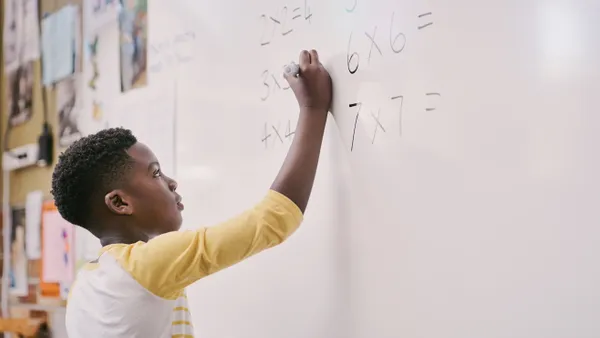Teachers, reading specialists and other educators conducting dyslexia screenings should pay particular attention to students' linguistic backgrounds to avoid over- or under-identification of students whose home languages differ from the language of instruction at school, according to an advisory released Monday by the International Literacy Association.
The research advisory, which comes at the start of Dyslexia Awareness Month, says educators should also approach dyslexia — which can impact students to varying degrees — in a number of other ways:
- Using effective, evidence-based phonics instruction.
- Implementing targeted, intensive word reading and spelling interventions.
- Holding small-group instruction for more opportunities for feedback.
- Conducting progress monitoring to determine whether students are responsive to the personalized instruction.
- Working on oral language, comprehension and other skills.
- Addressing social-emotional challenges related to dyslexia, such as anxiety or negative attitudes toward reading.
- Creating a positive learning environment focused on self-efficacy.
- Providing accommodations tailored to student needs like additional time, modified assignments, and using assistive technology.
"Dyslexia research is continually evolving, as is all research,” said Young-Suk Grace Kim, an ILA board member-at-large and chair of ILA’s Dyslexia Task Force, in a statement. The task force authored the advisory on behalf of the organization. Kim is also senior associate dean of the School of Education at University of California, Irvine.
“What does not change is that students with dyslexia have diverse learning needs that must be addressed through supportive and inclusive classroom environments," Kim said.
Dyslexia impacts about 20% of the U.S. population and represents an overwhelming majority of those with learning disabilities, according to the Yale Center for Dyslexia and Creativity. Up to 43.5 million children and adults may have dyslexia, according to the Society for Neuroscience.
Specific learning disabilities, which include disabilities such as dyslexia, made up about a third of students receiving services under the Individuals with Disabilities Education Act, according to Pew Research released in July. About 19% of students eligible for IDEA services had a speech or language impairment.
Dyslexia's impact on the nation's students could have been further exacerbated by the COVID-19 pandemic, during which students' development of reading skills were shown to have fallen below expected levels, according to recent national assessment data.
The latest assessment data released for the Nation's Report Card, from 2022, show average national reading scores reverted to levels last seen in the 1990s. Declines persisted in reading across grades 4 and 8 for a majority of states. While gaps between students with disabilities and their peers narrowed, their scores still lagged in comparison.
The U.S. Department of Education at the time called the overall results "unacceptable."
On Monday, alongside ILA’s advisory, Kim said, "By focusing on equitable identification practices and tailored supports, we believe educators can help all struggling readers succeed.”















